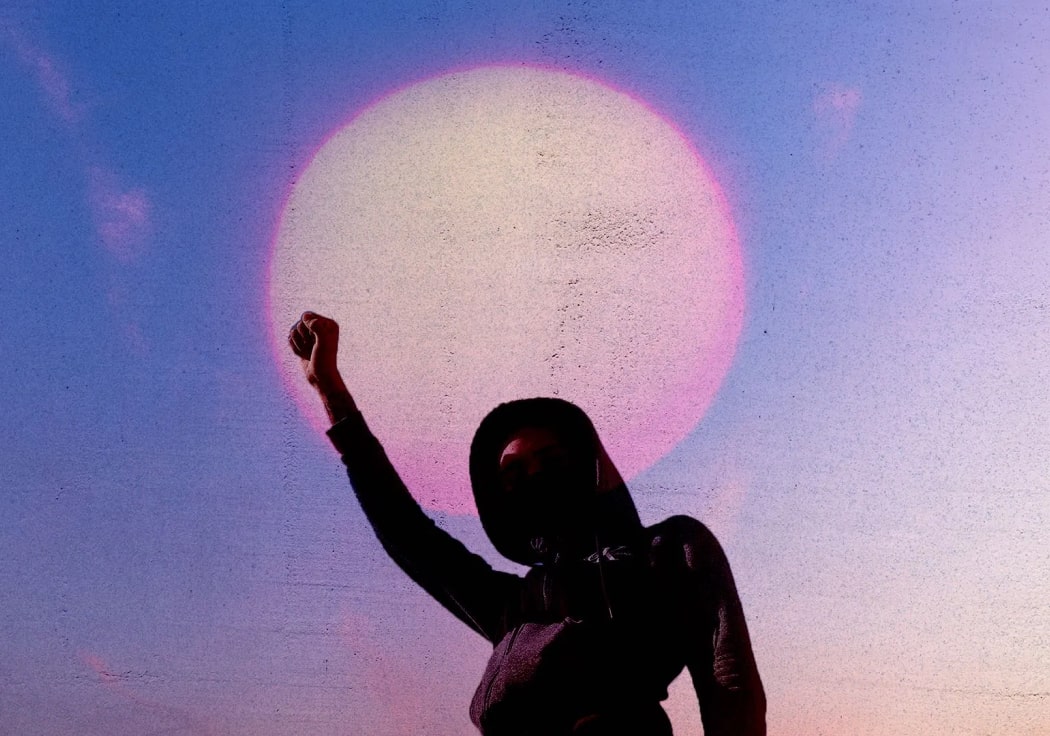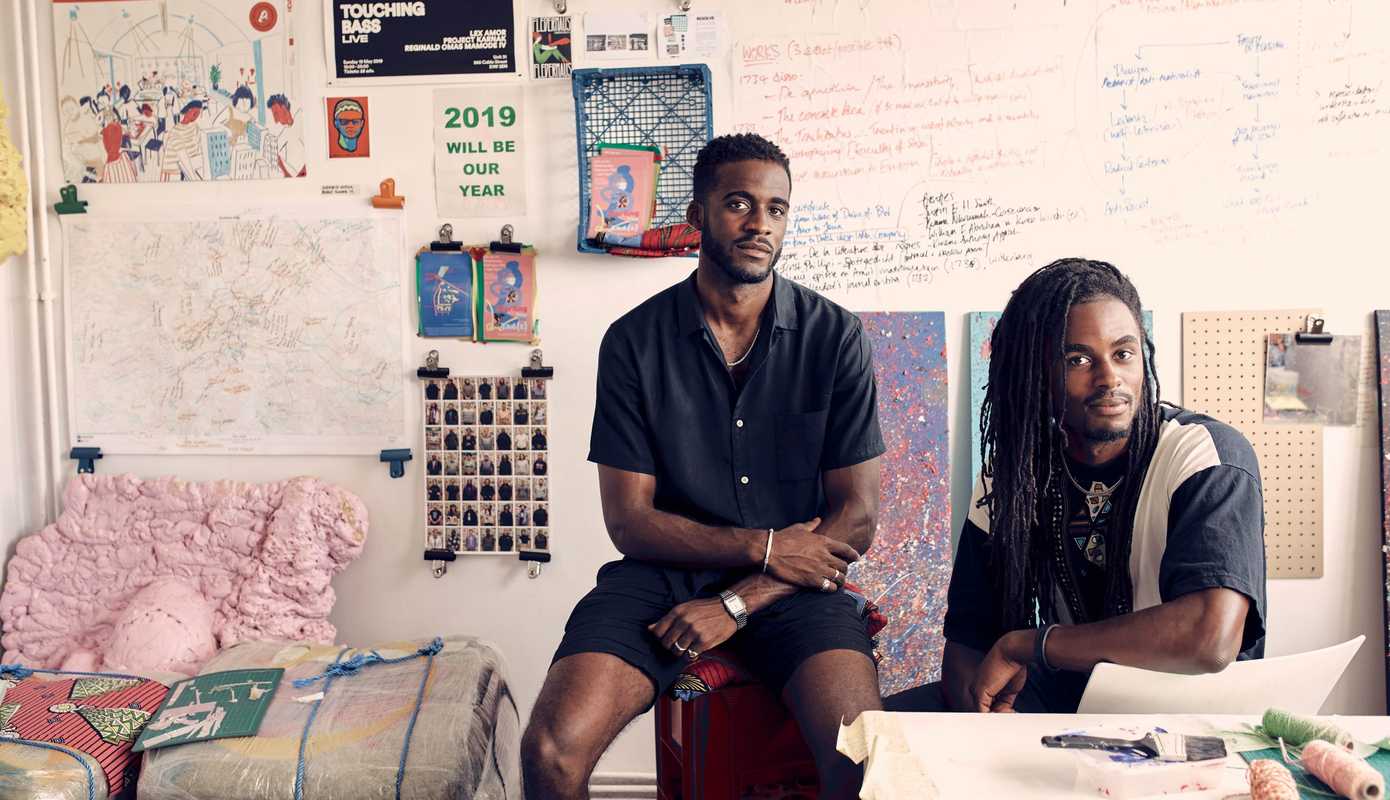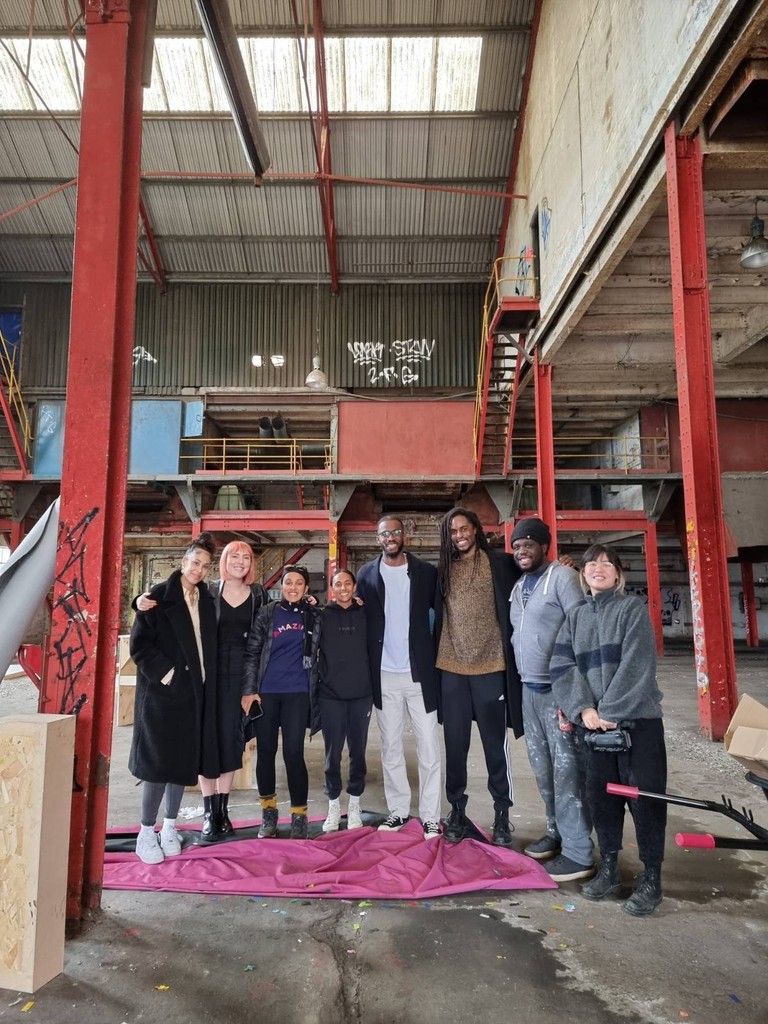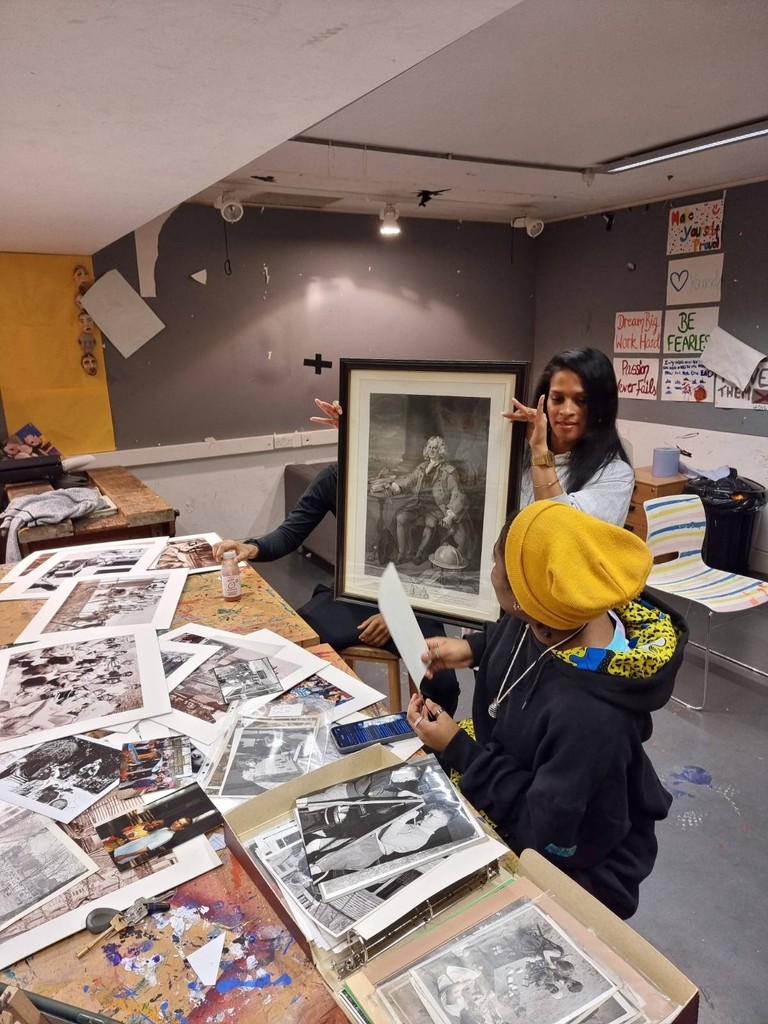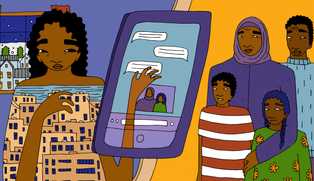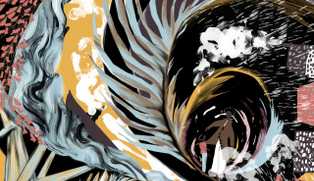Though Art Kane’s 1958 photograph ‘A Great Day in Harlem’ is jam-packed full of jazz gods, from Charles Mingus to Sahib Shihab, its foreground features a remarkably unidentifiable cast. Perched next to legendary pianist and bandleader Count Basie, a row of neighbourhood children can be seen at the front in the photograph, mean-mugging on the New York sidewalk. Despite jazz’s ‘Avengers Assemble’ moment happening behind them, the children impose themselves on the scene. Each child is planted so rigidly amidst the monochrome carnival that they are less figurative than they are architectural: a rogue balustrade freed from the steps of the Brownstones behind, set defiantly beneath Dizzy Gillespie, Mary Lou Williams and Coleman Hawkins, telling us, “they are great – but we are Harlem.”
This season of storytelling isn’t about jazz, and it’s certainly not about Harlem. It’s much closer to home. It’s about being taught Tik Tok dances outside ‘YARD’ in Ladywood by its co-founder Amber Caldwell’s daughter. It’s about walking from The Wicker into town with Sheffield-based artist Ashley Holmes, chewing the fat over how lit Jive Turkey nights at Mona Lisa’s in the 80’s must have been – and then bumping into the night’s legendary DJ, Winston ‘Winni’ Hazel, outside the big M&S. It’s about the evident love and adoration young people in Coram’s Fields Youth Centre in Camden have for Dershe Samaria and generations of youth workers before her. This season, LOCAL, celebrates the extraordinary work of local community support structures by making visible, audible, and tangible the ordinary moments that underpin them. We wanted to big up people and spaces that are inextricable from the past, present, and future of their cities and neighbourhoods; those whose greatness stems less from their being public figures in a locale and more from their place in the architecture of what it means to be local. This one’s not a ‘thank you’ for the bangers but for the balustrades, an ode to being part of the furniture.
LOCAL is set in three cities in the UK: Birmingham, London, and Sheffield. In each city, we attempt to platform the work and ‘workings out’ of three important examples of social infrastructure by commissioning a range of multimedia pieces that both respond to and support their existing programmes.
YARD, an arthouse and community space in the somewhat amorphous inner-city district of Ladywood in Birmingham, is the product of the arts and social justice organisation MAIA’s hard graft – but also their care, attention and radical imagination. Started by power-duo Amahra Spence and Amber Caldwell in 2012, MAIA has what feels like a uniquely Brum-like organisational intimacy with an array of community-focused practitioners in Birmingham. They share coffee, lessons, strategies, and futures with fellow Midlands civic powerhouses CIVIC SQUARE, led by the inspirational Immy Kaur, and KIONDO, led by the equally inspiring Andre Reid, and being in the room with all three organisations can often feel like being at a well-overdue family reunion.
YARD sits within Urban Splash’s Port Loop development, an organisation responsible for what will soon be over 1,000 homes nestled within a formerly derelict industrial site on a meander in the old Birmingham Main Line Canal. Within Port Loop, YARD navigates a constellation of complex spatial politics, from land speculation to urban enclaving, whilst being an essential infrastructure for local artists. From regular music sessions to weekly artist drop-ins, the space teems with life at every turn, effervescing in ways that still photographs are often unable to do justice. For this commission, a local film crew – led by Skin Deep’s Sylvia Hong and Anu Henriques – worked to record two days in the life of YARD, employing a range of different formats such as Super 8 film and camcorder tape to match the multiple rhythms of the space. Through film, both verbal recollections from YARD users and collective non-verbal acts – such as eating, typing, handshakes, laughter, glances, hugs – capture the social life of the building as testament to MAIA’s ethos.
Watch the trailer for ‘The YARD that MAIA built’
In London, Coram’s Fields, a children-only park and playground in the exhaustingly recognisable borough of Camden, was birthed by the philanthropic ideals of 18th-century public figure Thomas Coram. Today, moving beyond Thomas Coram’s memory, the park also contains a youth centre that has its own legacy: generations of youth workers and centre-attendees-turned-youth-workers who have worked tirelessly to provide stability, safety, and inspiration for young people in Camden and now increasingly also from other areas across London. For this commission, Nkenna Akunna, Skin Deep co-director and proud Coram’s OG, has taken a zine-inspired approach to telling the story of the centre and the park. Beautifully illustrated by Tamara-Jade Kaz, the piece collates first-hand accounts and archival material from Coram’s oldheads who have passed through over the years.
It also draws from an archival workshop conducted at Coram’s Fields with a group of young people and the unequivocal Dershe Samaria, a youth worker at the centre and raison d’etre for many people there. Here, the accumulation and curation of archival material meant far more than just a heartwarming trip down memory lane. Archiving generational uses of Coram’s provided a means to map out new assemblies of time, events, and histories for neighbourhoods and people in central London whose realities have long been eclipsed by their proximity to power. Boxes and boxes of photographs illuminated the importance of Coram’s unprogrammed spaces for young people just to exist, in addition to its spaces and programmes for arts, education, and self-development. Archiving in this way was an argument for the centre as social infrastructure that fosters and charges the abilities of young people to dream in a city that has repackaged that affordance as a luxury.
SADACCA, the Sheffield And District African Caribbean Community Association, is a historic Caribbean community centre and former steel manufacturing office that enshrines the Wicker, a folkloric inner-city street of halal diners, Caribbean food spots, and Habesha and Maghrebi cafes. Born out of the West Indies Association in 1955, it is one of the paragons of British Caribbean-run buildings outside of the UK’s capital, where both remixed and purpose-built spaces tell important stories of migration, homemaking and resistance in much overlooked, post-London contexts. Today, in spaces like SADACCA – from the optimistic modernism of the recently-saved African Caribbean Heritage Centre in Toxteth, Liverpool, to the playful civic kitsch of the Malcolm X Centre in St Pauls, Bristol – the built legacies of Caribbean movement outside of London are entrenched in the building of new movements and diasporic legacies.
For this feature, we strove to continue these efforts of legacy building by commissioning three Sheffield-based artists from the African Caribbean diaspora to create visual responses to SADACCA’s ‘Bantu Archive Programme,’ created in partnership with the University of Sheffield’s ‘Live Works’ initiative. Exploring the oral recollections of twelve elders in SADACCA’s community, each artist found resonance in an aesthetics of excavation and disclosure, employing adventurous visual languages in the depiction and pursuit of an artifactual association between their own sense of arrival, departure, and dispersion, and the memories of those who stood before them. Multidisciplinary artist Grace Lee’s work, Arrivals, permits us not just to hear but feel memory in the archive through her synaesthetic use of distressed gold leaf fragments and pixelated grain. The coral pinks and pale teals of illustrator Tomekah George’s piece, Cora, are a seduction that quickly becomes submersion as the billowing, gyral forms in the artwork locate a father and daughter in both the arms and throes of a tempest. Artist and DJ Ashley Holmes’ audiovisual journey, No Matter Where You Go, No Matter Where You Roam, revisits the spectral vestiges of nighttime venues in Sheffield, turning the laments of Toots Hibbert into necromantic ritual: raising ‘spaces of the dance’ from the dead. Finally, all of these works were written up by Sheffield-based journalist, domestic abuse specialist, and founder of Peaks of Colour, Evie Muir, who captures their relationship with SADACCA and the archives with a fidelity that presupposes the archiving yet to come.
Read: Three Sheffield artists visualise a living oral archive gathered by community centre SADACCA
If ‘A Great Day in Harlem’ had been taken in the UK between 2007 and 2009, when mandem across the country could invariably be found pointing to each other in group photos, this would have been a very short curator’s note. LOCAL is a perpetual point to the gang, whether through film, visual essays, illustrations, or simply words. We found an unparalleled joy in the potential to use local artistic commissions to point to the inspirational work of initiatives we feel proximate to, and to build on and celebrate them. Despite the ambition to use this editorial season as a means of practicing infrastructurally, to dissipate resource and facilitate resource-building, it was also an excuse to be intimate: to laugh and to share, but also to be still and to reflect with our peers on what is done and what’s left to do. This point extends also to the awe-inspiring team at Skin Deep – Anu, Georgie, Hannah, Sylvia and Nkenna – who have also been an essential infrastructure through which our team and the commissioned artists of this season have flourished. They too exemplify LOCAL as the people that make places, the fam that our ends don’t start without.
LOCAL is produced and edited by Skin Deep, and curated by RESOLVE.
Endless thanks to everyone who has contributed to the season – as artists, writers, collaborators, supporters, friends, family. Thanks especially to everyone at SADACCA, Coram’s Fields and MAIA.
RESOLVE Collective is Akil Scafe-Smith, Seth Scafe-Smith, Melissa Haniff, Cynthia Sylveira, Sahar Ibrahim and Celine Topsakal.
Skin Deep is Anu Henriques, Sylvia Hong, Nkenna Akunna, Hannah Azuonye and Georgie Johnson.

